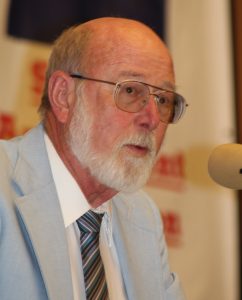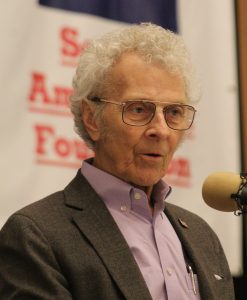By Dave Workman | Senior Editor

Dave Hardy
David Hardy, an Arizona attorney and Second Amendment scholar provided a brief but informative history of how the legal community went from thinking the right to keep and bear arms was all about the National Guard to recognizing the amendment is protective of an individual fundamental right that applies to all citizens.
Hardy was among a handful of young attorneys and law students that began focusing on the Second Amendment back in the 1970s. His first paper for a law review supporting the individual right position was rejected by the editors, but within 20 years, what he wrote would literally become the law of the land, thanks to the U.S. Supreme Court’s 5-4 ruling in District of Columbia v. Dick Anthony Heller in June 2008.
The road was filled with speed bumps, and no small amount of intellectual labor.
Proponents of the individual right position worked on that for several years before the late Don Kates was able to publish an article in the Michigan Law Review, a prestigious legal periodical, that got the legal community’s attention.
“It had an effect,” Hardy said of his late friend’s scholarship. “Sanford Levinson, a well-respected law professor in Texas read the article, was impressed and published ‘The Embarrassing Second Amendment.’”
Suddenly, Hardy recalled, the legal community started taking the subject seriously.
Levinson’s work had an impact and people in Hardy’s coterie began specializing on different parts of the issue. One looked at the history of bearing arms in England, another focused on the 14th Amendment angle, and so it went.
Then they looked for a case, and it came along with the plight of Dick Anthony Heller, a Washington, D.C. resident who worked as an armed security officer but couldn’t have a gun in his home. What would become known as District of Columbia v. Dick Heller was handled by attorneys Alan Gura and Clark Neily, along with Robert Levy, senior fellow at the Cato Institute.
Hardy recalled the both sides were worried when the case was argued before the high court. When the ruling came down that affirmed the individual right but said it is subject to “reasonable regulation,” the legal door was ajar. That case was followed two years later by a Second Amendment Foundation case, McDonald v. City of Chicago, which was argued by Gura, In June 2010, almost to the day two years after Heller, the court handed down a second 5-4 ruling that nullified Chicago’s handgun ban and incorporated the Second Amendment to the states via the 14th Amendment.
Since then, many cases have been brought against state and local gun control laws, and Hardy simply acknowledged that getting where we are today has been a battle far from over.
New PBS Program on Constitution Coming

Bob Chitester
The final report on of the first day’s agenda at the Gun Rights Policy Conference came from Bob Chitester, executive chairman of the Free to Choose Network, and it was essentially a preview of a program to be broadcast on public television dealing with gun ownership.
It will be part of a coordinated effort to hold a series of town hall meetings across the country to start the long-sought “national dialogue” on gun rights, he explained.
In his first appearance at the conference, Chitester explained how he had met with a member of the District of Columbia Circuit Court and persuaded that judge to “undertake the creation of a public television series on the Constitution.”
About 140 hours of material is being condensed down to three hours of actual programming. It will cover all aspects of the right to keep and bear arms, the history of the Second Amendment and the courts, what the amendment protects and what the amendment really means.
A short segment of the program was previewed for the Gun Rights Conference audience, and they appeared very receptive.
In conjunction with the airing of this program, Chitester said he is working with Alan Gottlieb, founder and executive vice president of the Second Amendment Foundation, to set up these meetings.



